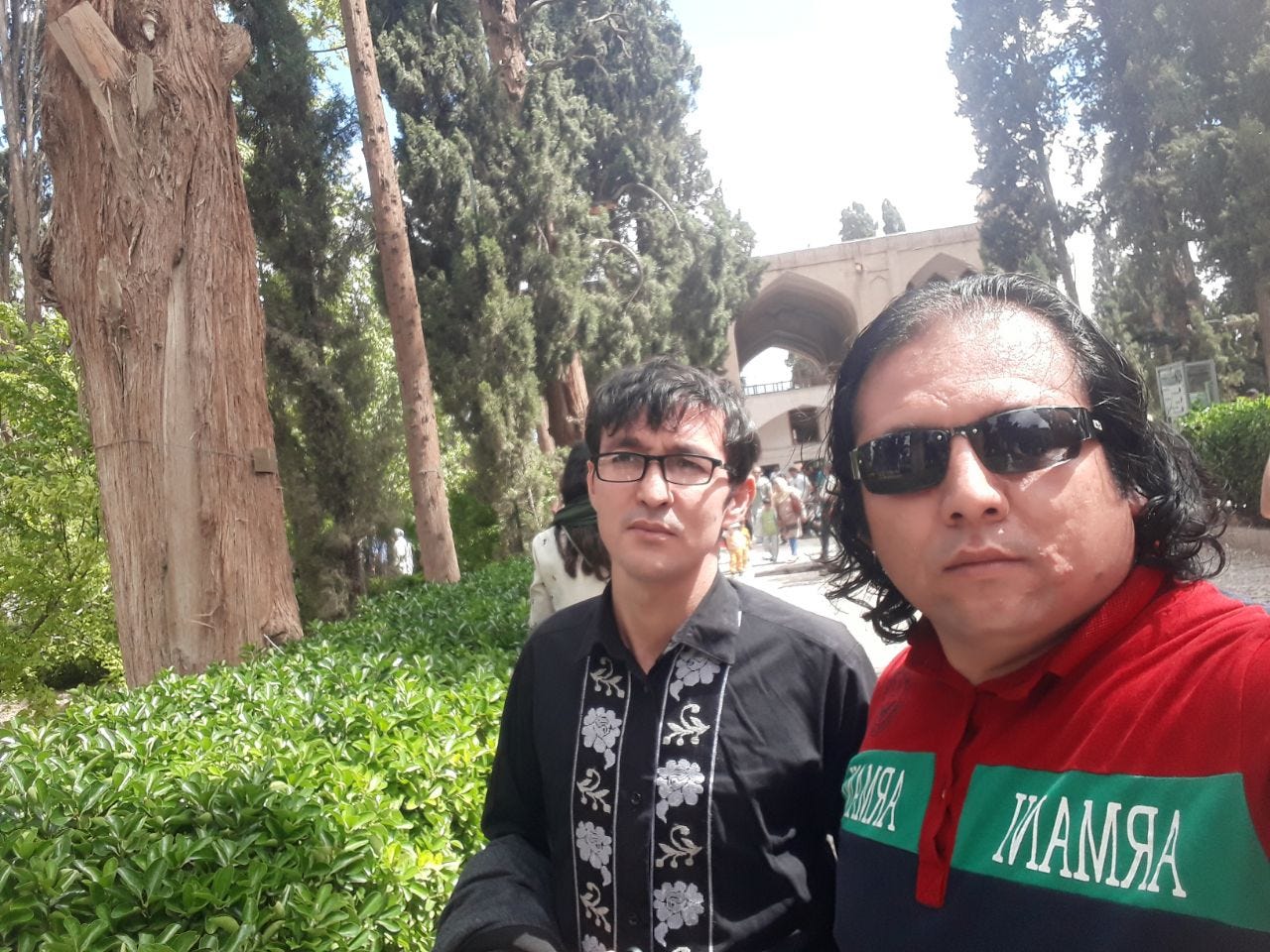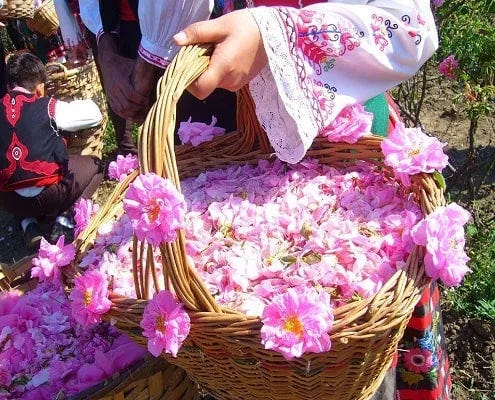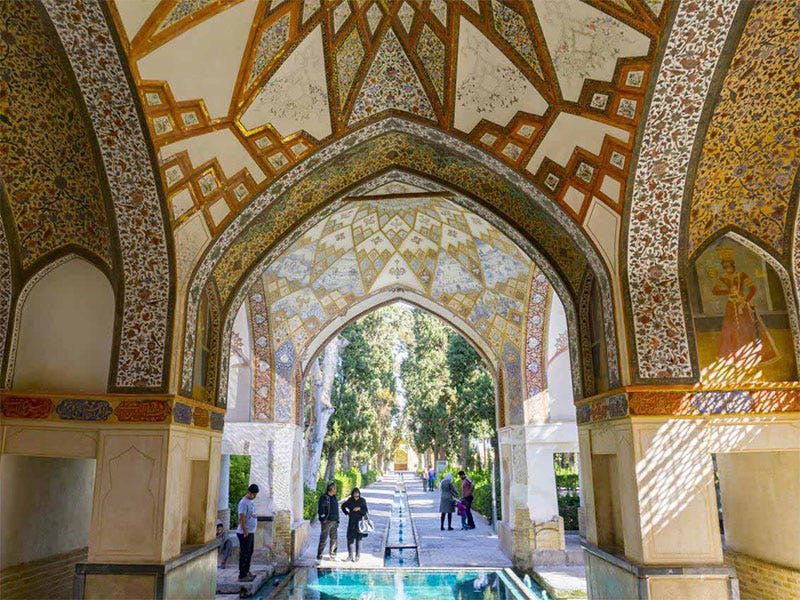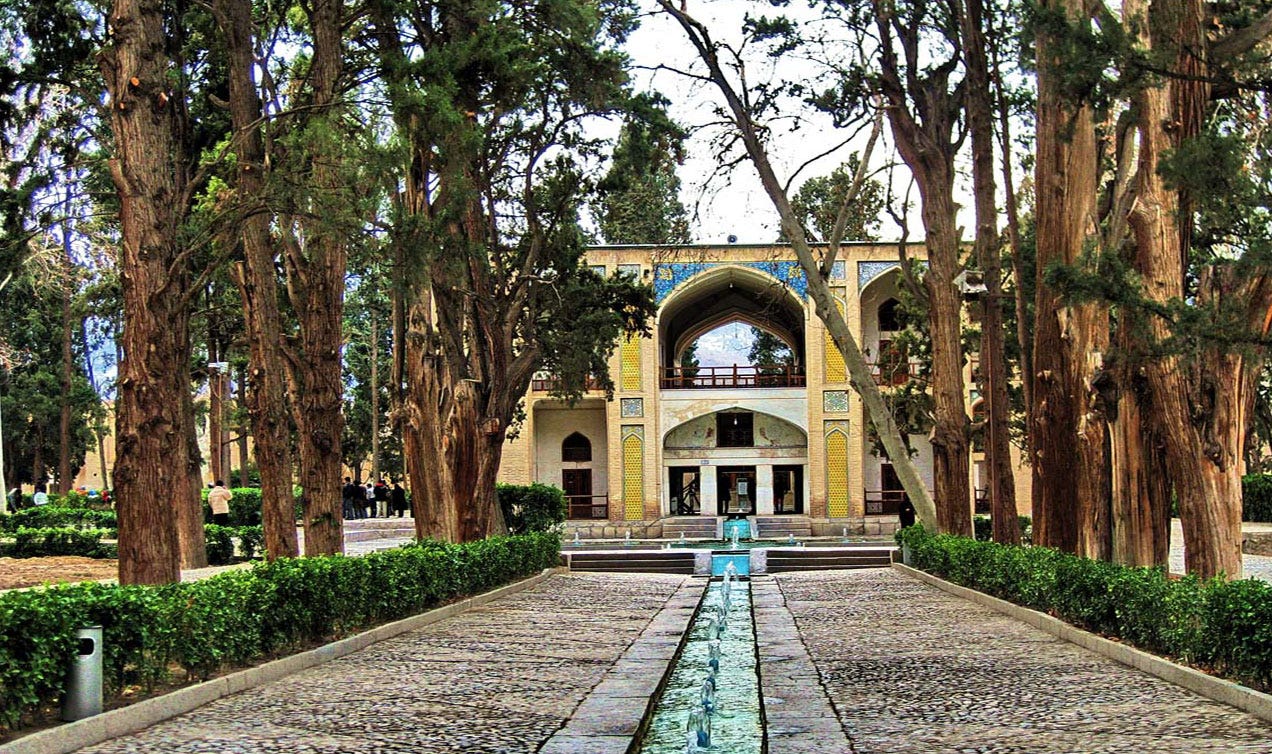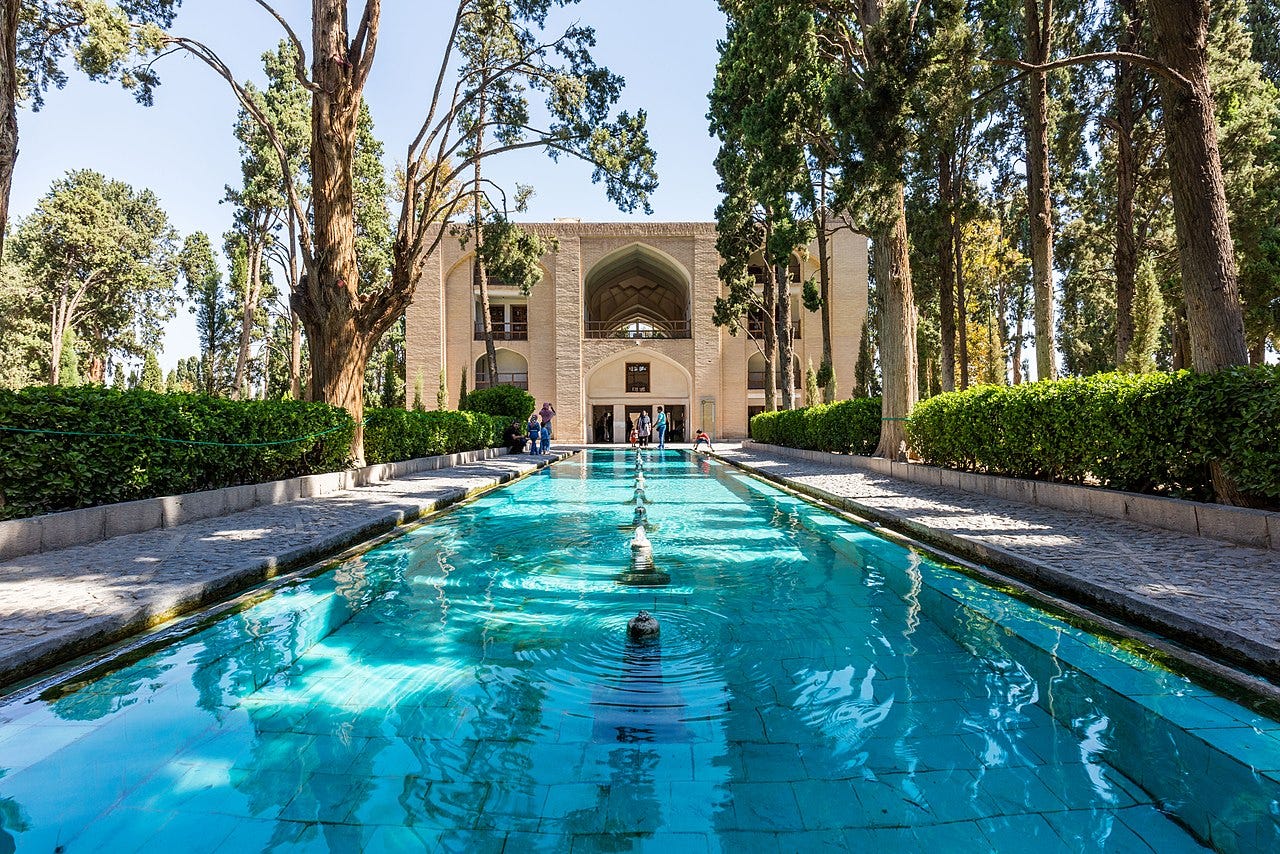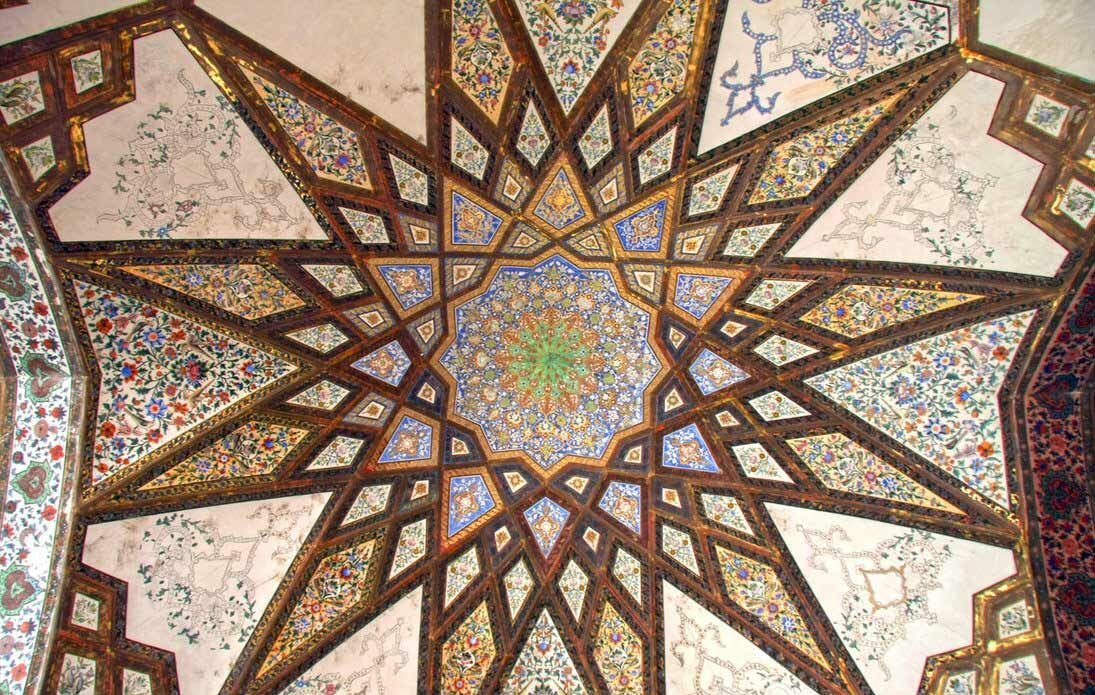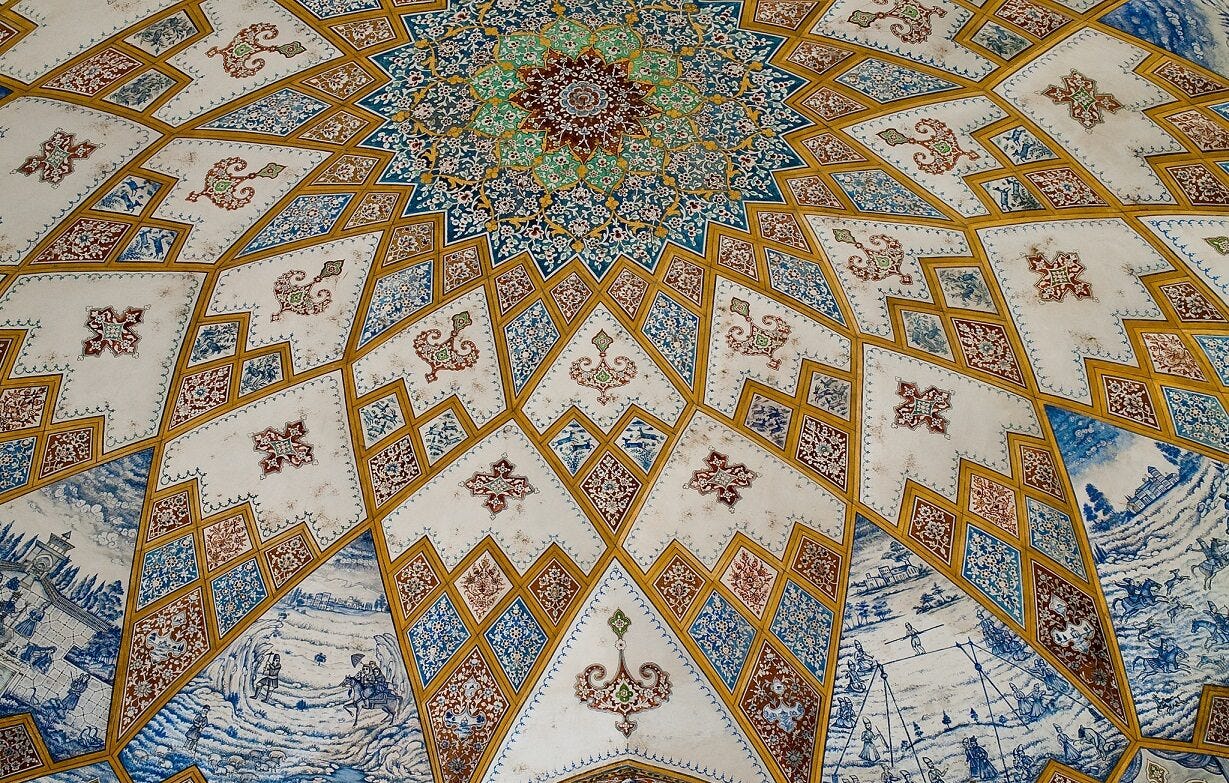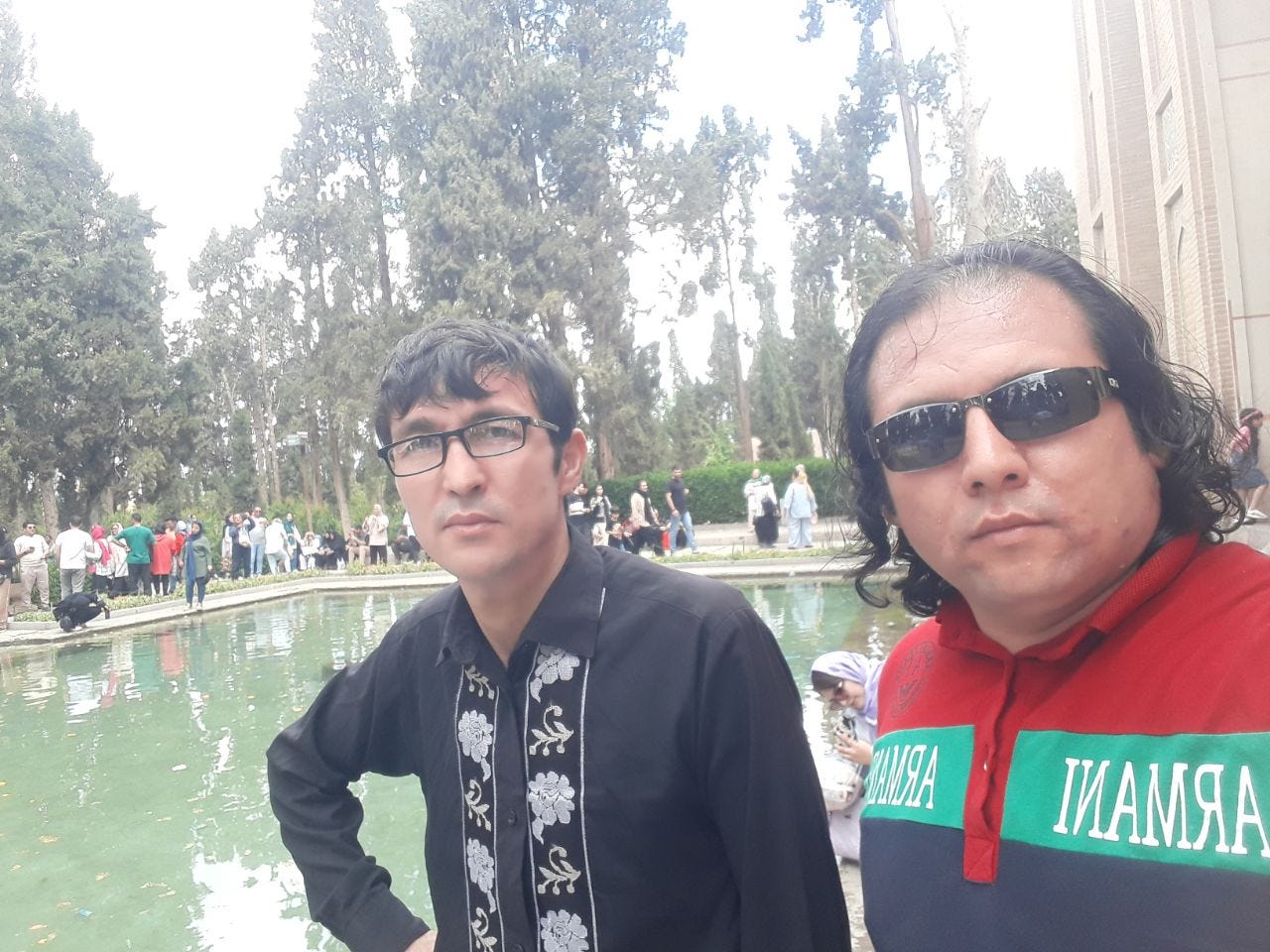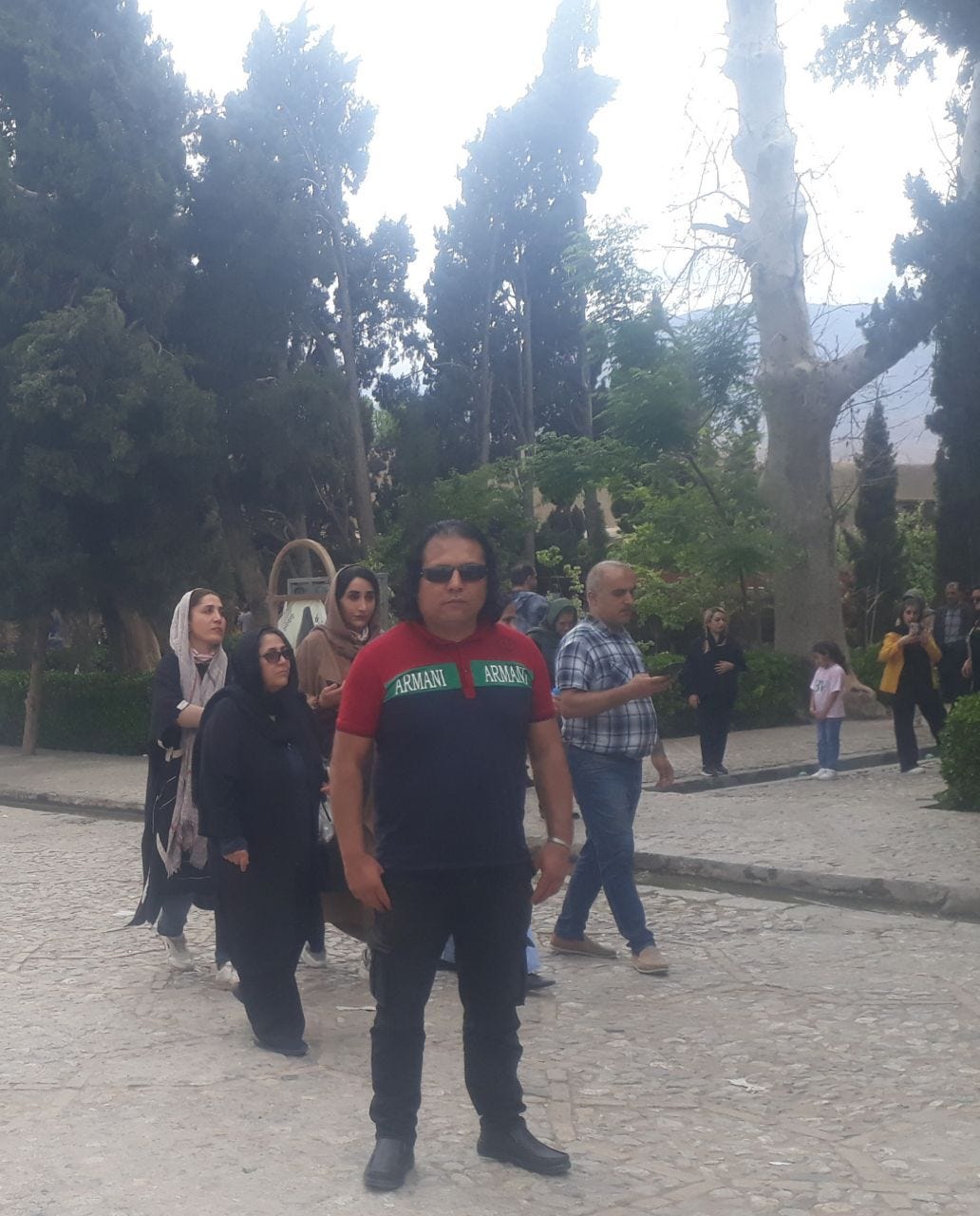A Trip to the Fin Garden and A Glimpse of Its Corners
The most astounding thing is that taxis and drivers in Kashan charge high fares and even double prices for foreign passengers and tourists
Traveling gives a different mood to people. Humans should not neglect travel, recreation and tourism in their life because it adds many extensions to the human life experiences. On Friday, May 3, 2024, my friend Aman Shadkam and I traveled to the Fin Garden of Kashan. Fin Garden of Kashan is not an unfamiliar name in the fields of history, ancient, tourism, civilization, and culture, which everyone must have heard of.
On the way, the taxi driver who took us to Fin Garden said that I live near the Fin Garden in Kashan, on Amir Kabir Road, but I cannot go to Fin Garden even once a year, so you come here from faraway cities. We arrived near Fin Garden, where there was much traffic. We waited in the traffic line for almost 20 minutes to go by car near the garden gate. The traffic jams did not decrease but increased. With this situation, we got out of the taxi, walked about two kilometers, and reached the gate of Fin Garden.
In the Long Ticket Queue
At noon on Friday, we arrived at Fin Garden, which is a place of historical and cultural beauty. Thus, this was my first time visiting this historical, ancient, and artistic place. When we got there, we stood in the ticket line because of the crowd of visitors who came from different cities and countries. They have to stand in a long line for tickets. We stood in line for about ten minutes until it was our turn; the cost of the ticket to enter and visit Fin Garden was 40,000 Tomans per person.
Kashan Rose Festival
We went inside the garden, visited its different places and still took pictures. There were many visitors from the categories of women, men, youth, and children, the majority of whom were Iranians and came from different cities in Iran. Of course, foreign tourists also come, especially in the spring, during the rose flower, which is known as the “Kashan Rose Water Festival”. Kashan is also famous around the world for its rose flower, which is the season of rose flower in Kashan for almost two months in spring, i.e., in May and June. Residents of Kashan, as well as significant rose flower sellers, pluck these flowers and sell them to national and international customers and tourists. So, Kashan’s rose is used to make rose perfume, which has a beautiful smell.
Delight of the Corn Cob
After visiting Finn Garden, we went out and decided to eat corn cob. I really love maize kebabs. I have eaten so much corn cob in Kot-e Sangi, Kabul, Afghanistan, and its pleasure is unforgettable. But my friend Aman Shadkam did not agree. He loves a chicken kebab. We wanted to order chicken kebabs from a restaurant; at that time, one of my friends, who is an immigrant resident of Kashan, called us and invited us to have a meal. We were also happy and went to that dear friend’s house and became guests. They hosted us very well, for which I am grateful to all of them.
Taxi Fares Are Unreasonable
The most astounding thing is that taxis and drivers in Kashan charge high fares and even double prices for foreign passengers and tourists. At the same time, city fares in all Iranian cities are clearly approved by the municipality. However, they charge high fares from passengers at any cost of lies and tricks, and it doesn’t matter to them. They still charged us a higher fare than approved by Kashan municipality, but their private cars charge even more if they find out that they are not residents of Kashan and that the passenger has come from another city. Many visitors and tourists from countries such as China, India, Pakistan, Afghanistan, Iraq, Japan, Germany, Holland, Italy, Australia, and other countries come to Finn Garden. These drivers and taxis just need to find out where in the damn world this passenger came from so they can charge more fares. Anyway, I’d like to give you a glimpse of Fin Garden’s corners as you read below.
The Fin Garden of Kashan, nestled within the ancient city of Kashan in Iran, related to Isfahan Province and borders with Qom Province, stands as a masterpiece of Persian garden design, captivating visitors with its lush greenery, intricate water features, and rich architectural heritage. Renowned for its historical significance and aesthetic beauty, the Fin Garden offers a glimpse into the rich cultural tapestry of Iran, reflecting centuries of artistic and engineering ingenuity. This writing delves deeper into the history, architectural features, cultural significance, and contemporary relevance of the Fin Garden, highlighting its enduring allure as a symbol of paradise on Earth.
The 9th Most Famous Garden in UNESCO World Heritage
The Fin Garden of Kashan stands as a pinnacle of Iranian garden architecture, situated amidst the picturesque landscapes of Kashan. Its significance is underscored by its inscription in 2011 as one of Iran’s nine renowned gardens, designated named as “The Persian Garden,” in UNESCO World Heritage.
Encompassing nine gardens within the provinces of Iran, this property showcases the rich tapestry of Iranian garden design, shaped over centuries and echoing principles dating back to the era of Cyrus the Great in the 6th century BC. Divided into four quadrants, the water emerges as a central element, serving both functional and ornamental purposes, symbolizing the paradisiacal ideals of Eden and the four Zoroastrian elements: Sky, Earth, Water, and Plants. With origins spanning from ancient times, these gardens boast a fusion of architectural marvels, including buildings, pavilions, and intricate irrigation systems. Their influence extends far beyond Iran, shaping garden aesthetics as distant as India and Spain.
One of the Most Beautiful Gardens in Asia Among 50 Most Fabulous Gardens in the Globe in 2008 by Telegraph
Daily Telegraph mentioned two famous gardens in Iran, Fin Garden and Golshan Garden. Bagh-e Fin, located in Kashan, Iran, stands as the oldest surviving garden in the country, having been completed around 1590 during the early Safavid era. It showcases the classic “Chahar Bagh” layout, characterized by intersecting water channels, inspired by verses in the Koran portraying paradise as a place where rivers meet. Here, water flows from the mountains through an underground network of Quanats or pipes. The channels, adorned with blue tiles, feed into spacious basins, creating a striking contrast with the light-colored stone pathways. Providing shade are rows of cypress trees, reputedly 400 years old, while remnants of imposing stone walls enclose the garden.
Historical Context
The origins of the Fin Garden can be traced back to the Safavid era, during the reign of Shah Abbas in the 16th century. Commissioned as a retreat for the royal court, the garden served as a sanctuary of tranquility amidst the harsh desert landscape of Kashan county of Iran. Its name, “Fin,” is derived from the Persian word for “paradise,” reflecting the lofty aspirations of its creators to emulate the blissful gardens described in Persian literature and mythology.
Architectural Marvels
Central to the design of the Fin Garden is its intricate layout, characterized by the Chahar Bagh (fourfold garden) style typical of Persian gardens. The garden is divided into four quadrants by intersecting water channels, symbolizing the four rivers of paradise mentioned in Islamic tradition. These channels are fed by an underground irrigation system known as Qanat (Aqueduct), which draws water from nearby mountains to sustain the garden’s lush vegetation year-round.
One of the most iconic features of the Fin Garden is the historic Fin Bath, a pavilion located at the heart of the garden. This architectural gem showcases exquisite tilework, frescoes, and geometric patterns, reflecting the artistic sophistication of the Safavid era. The bath served as a gathering place for royalty and dignitaries, who would convene to discuss matters of state and enjoy the serenity of the garden.
Cultural Significance
Beyond its aesthetic appeal, the Fin Garden holds deep cultural significance for the people of Iran and even among the Asian countries. It serves as a tangible expression of Persian ideals of beauty, harmony, and paradise, as reflected in the poetry of Rumi, Hafez, and other luminaries of Persian literature. The garden’s tranquil ambiance and verdant landscapes have inspired countless artists, poets, tourists, writers, and scholars over the centuries, leaving an indelible mark on Iranian culture.
Moreover, the Fin Garden serves as a testament to the ingenuity of Persian engineering and horticulture. Its sophisticated irrigation system, architectural marvels, and meticulously landscaped grounds bear witness to the advanced knowledge and skills of its creators, who transformed the harsh desert terrain into a verdant oasis of beauty and abundance.
Contemporary Relevance
In the modern era, the Fin Garden continues to enchant visitors from around the world, serving as a popular tourist destination and a UNESCO World Heritage Site. Despite the passage of time and the challenges of urbanization, the garden remains a cherished symbol of Iran’s cultural heritage, offering a glimpse into the country’s rich history and traditions.
Furthermore, the Fin Garden serves as a reminder of the importance of preserving and stewarding natural and cultural heritage for the human future generations. As climate change and environmental degradation pose increasing threats to the world’s ecosystems, gardens like Fin serve as sanctuaries of biodiversity and havens of tranquility, reminding us of the intrinsic value of nature and the need to protect it for the benefit of all.
In conclusion, the Fin Garden of Kashan stands as a testament to the enduring legacy of Persian civilization, showcasing the timeless principles of beauty, harmony, and paradise that have defined Farsi culture for millennia. From its historical origins as a royal retreat to its contemporary role as a symbol of cultural heritage and environmental stewardship, the Fin Garden continues to inspire awe and admiration, inviting visitors to experience the splendor of garden design and the timeless beauty of nature. As such, it remains not only a physical oasis of tranquility but also a spiritual sanctuary for all who seek solace and inspiration amidst the complexities of the modern world.
Eventually, as a visitor, I suggest you visit this beautiful (Fin Garden) ancient, recreational, and cultural place and record your unforgettable historical, ancient, travel, and cultural memories in your life history. And in every historical, ancient, and artistic place you go, you should have a camera so you can capture more memorable photos.





